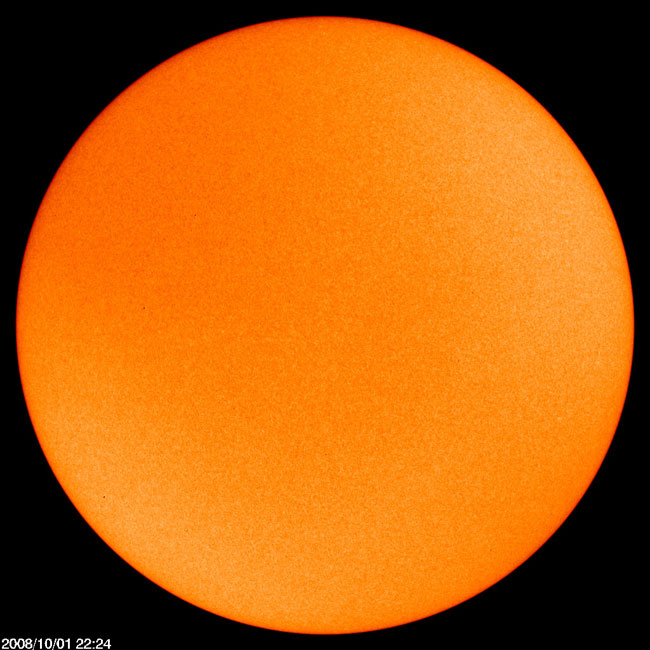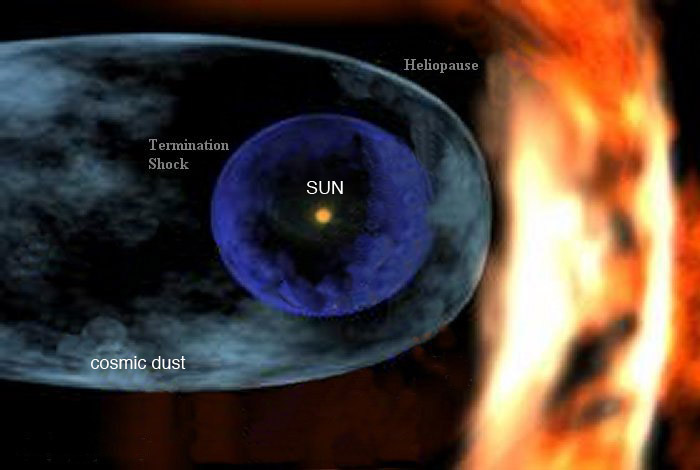|
Unusually quiet Sun has scientists worried
By Dan Eden for Viewzone Every 11 years, the activity on the surface of the Sun completes a cycle of quiet, followed by an increasingly active period of sunspots and energetic solar flares. These flares are actually eruptions on the surface of the Sun which "belch" and "burp" and sometimes, as with a Coronal Mass Ejection, "vomit" huge blobs of extremely hot, radioactive plasma. Until recently, scientists really didn't know why the Sun did this or why it happened every 11 years. It is now believed that the cycle is related to the gravitational relationships (i.e. barycenters) with the planets -- most importantly with the largest planet Jupiter, which orbits the Sun at about the same rate as the solar cycle (11+ years). That being said, scientists have been plotting the recent cycles and had predicted that the position of Jupiter and it's giant sister, Saturn, were in alignment for the "perfect storm" of sunspot activity for the next cycle, number 24. They had expected to see one of the most active cycles ever recorded and were concerned that the "solar maximum" -- the period in the cycle when flares are most active -- would coincide with the alignment of our Solar system's ecliptic with the Milky Way galaxy's equator. But something odd has been happened. The Sun has been strangely calm this year. For more than 200 days so far this year, no sunspots have been observed. In fact the Sun has been quieter this year than in any year since 1954, when it was calm for 241 days.
 An image taken on Sept. 27, 2008, shows a solar disk completely unmarked by sunspots! Even before the active period, when the Sun is in its "solar minimum," the magnetic fields usually begin to rumble and shift. But for cycle 24, even this prerequisite activity has been notably absent. "It's starting with a murmur," said David H. Hathaway, a solar physicist at NASA's Marshall Space Flight Center in Huntsville, Ala. As of September 2nd, the 276th day of the year, the National Oceanic and Atmospheric Administration's Space Weather Prediction Center in Boulder, Colo., had counted 205 consecutive days without a single sunspot. Solar Wind cut in half! Along with light and heat, the radiation and charged particles from the Sun blows against the surrounding space at a velocity of millions or miles per hour in what scientists call the "solar wind." Perplexed scientists reported last month that this solar wind has diminished to its lowest level in 50 years. This lack of solar wind coincides with a collapse in the heliopause -- the "atmosphere" or bubble that surrounds our solar system as it passes through open space. The heliopause is created by the magnetic field of the Sun and acts like a deflector shield against cosmic dust and debris. Scientists note that this cosmic dust has already penetrated our solar system to a point just beyond Saturn.
 Scientists are not sure why this "solar minimum" has been especially quiet. Some speculate that this might be the start of an extended solar "cooling" that could offset the fear of environmental warming. They draw attention to a similar phenonenon in the middle of the 17th century to the early 18th, known as the Maunder Minimum, when sunspots were extremely rare and coincided with a climate oddity known as the Little Ice Age.
Not as bad as the past? Compared to the Maunder Minimum, the current pace of sunspots "makes it look like we're having a feast, not a famine," Dr. Hathaway said. Scientists say it's too early to worry and hope that the current abnormal activity will soon disappear. Dr. Hathaway had predicted two years ago, based on the Sun's behavior near the end of the last cycle, that the maximum this time would be ferocious. "I'm getting worried about that prediction now," he said. "Normally, big cycles start early, and by doing that, they cut short the previous cycle. This one hasn't done that." The reduction of the solar wind is another puzzle. David J. McComas of the Southwest Research Institute in San Antonio and one of the researchers who analyzed data from the Ulysses Sun-watching spacecraft, said that the strength of the solar wind seemed to be in a long-term decline. The pressure exerted by the solar wind particles during the current minimum is about a quarter weaker than during the last solar minimum, Dr. McComas said. Dr. McComas said scientists were still trying to figure out how all the data fits together. If the sunspot activity is related to the gravitational relationship with the large planets, specifically the barycenter (a theoretical center of gravity between two rotating masses), then it might be the influence of the Milky Way that has taken control of the Sun's activity. Solar flares are believed to occur when the barycenter is on or near the Sun's surface. The barycenter for the Milky Way would most certainly be outside of this zone and might render any planetary influences as insignificant. This is especially significant since we are approaching an alignment with the equator of the Milky Way galaxy in 2012. It could be similar to the extreme low tide that preceeds a huge tsunami! We'll have to wait and see.
| ||||||||
